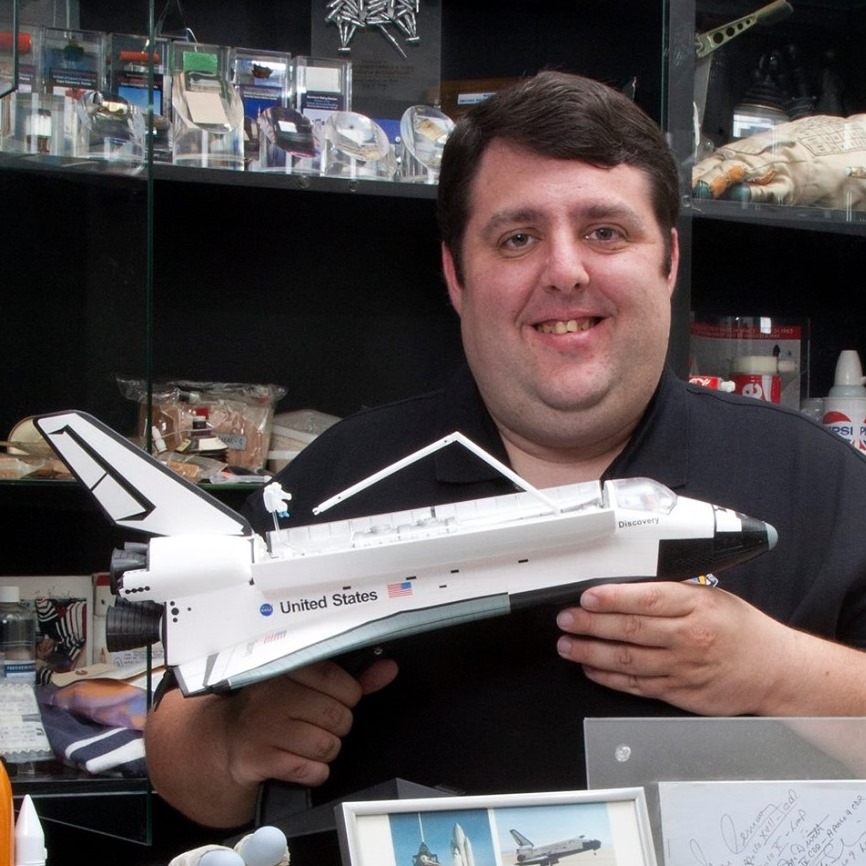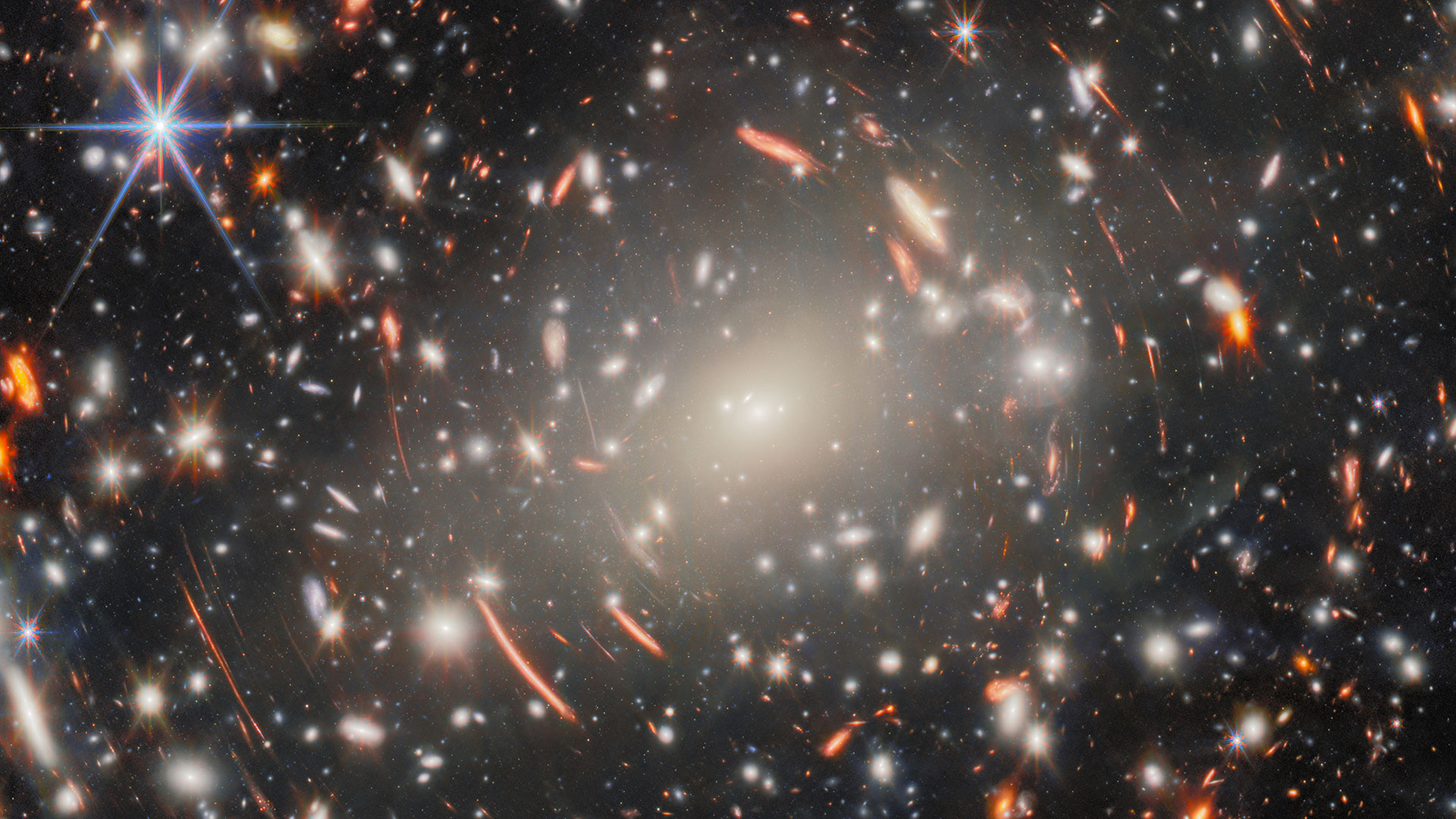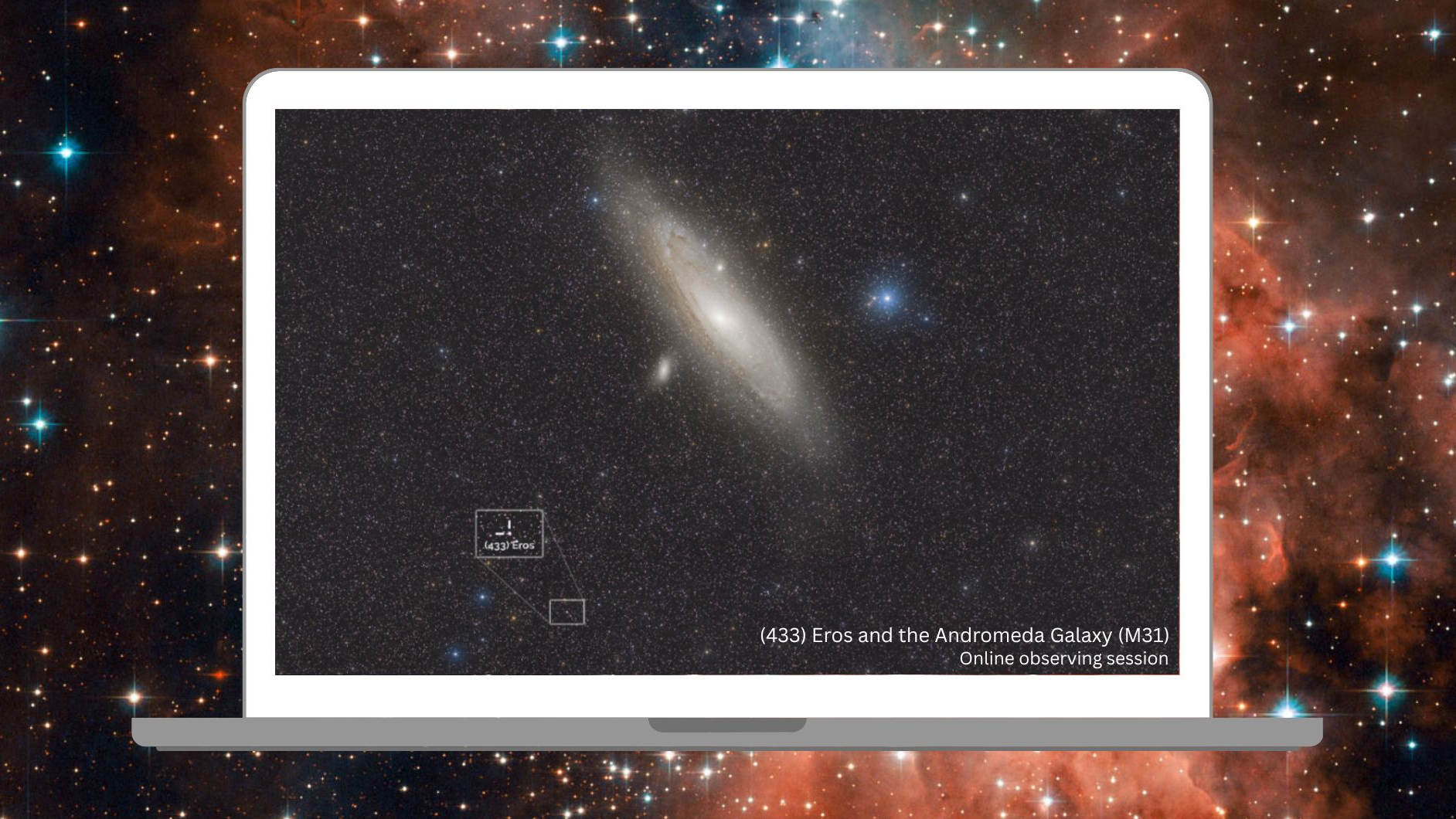JWST peers through a cosmic lens in 'deepest gaze' to date | Space photo of the day for May 27, 2025
At first glance, this is a large galaxy cluster. Take another look, though, and the warped light from older, distant galaxies comes into view.
The James Webb Space Telescope captured this stunning image of a galaxy cluster so massive that it serves a gravitational lens, warping the light and revealing more distant galaxies from the early universe.
What is it?
Abell S1063 is a cluster of galaxies that displays a strong gravitational lens effect, in which the light from distant galaxies behind the cluster is bent around it due to Abell S1063's mass, which creates a curvature in spacetime and forms the warped arcs that appear to surround it in the image.
JWST's Near-Infrared Camera (NIRCam) was able to use this effect, previously observed by the Hubble Space Telescope, to reveal a multitude of faint galaxies and previously unseen features.
Where is it?
Galaxy cluster Abell S1063 lies about 4.5 billion light-years from Earth in the southern constellation Grus, the Crane. The distorted background galaxies are at a range of cosmic distances.
Why is it amazing?
JWST is adept at taking these types of images, known as a "deep field." When making these images, the telescope takes a long exposure of a single area of the sky in order to gather as much light as possible. Doing so can help the telescope see distant, faint galaxies that other observatories can't.
"With 9 separate snapshots of different near-infrared wavelengths of light, totalling around 120 hours of observing time and aided by the magnifying effect of gravitational lensing, this is Webb's deepest gaze on a single target to date," the European Space Agency wrote in a statement.
"Focusing such observing power on a massive gravitational lens, like Abell S1063, therefore has the potential to reveal some of the very first galaxies formed in the early universe."
Want to learn more?
You can learn more about gravitational lensing and how the James Webb Space Telescope was pushed to its limits to see the most distant galaxies. You can also see the Hubble Space Telescope's view of galaxy cluster Abell S1063.
Breaking space news, the latest updates on rocket launches, skywatching events and more!

Robert Pearlman is a space historian, journalist and the founder and editor of collectSPACE.com, a daily news publication and community devoted to space history with a particular focus on how and where space exploration intersects with pop culture. Pearlman is also a contributing writer for Space.com and co-author of "Space Stations: The Art, Science, and Reality of Working in Space” published by Smithsonian Books in 2018.
In 2009, he was inducted into the U.S. Space Camp Hall of Fame in Huntsville, Alabama. In 2021, he was honored by the American Astronautical Society with the Ordway Award for Sustained Excellence in Spaceflight History. In 2023, the National Space Club Florida Committee recognized Pearlman with the Kolcum News and Communications Award for excellence in telling the space story along the Space Coast and throughout the world.
You must confirm your public display name before commenting
Please logout and then login again, you will then be prompted to enter your display name.

